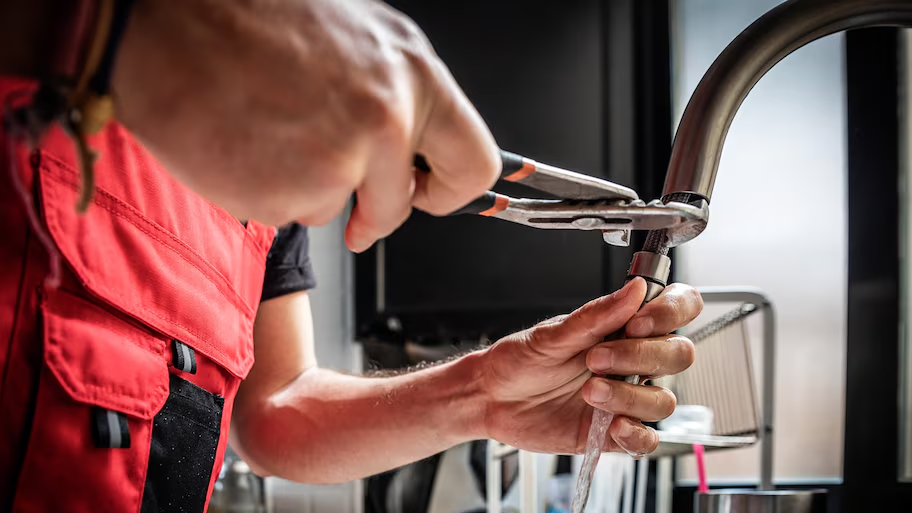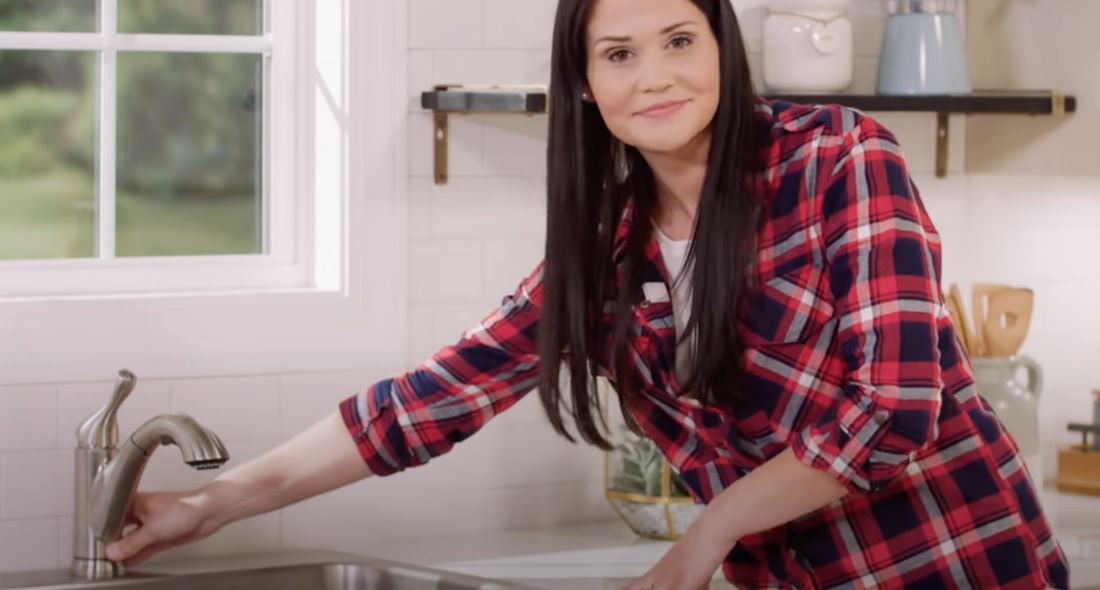Why It's Important to Fix a Broken Faucet
Why It's Important to Fix a Broken Faucet
Blog Article
Presented here underneath you might get some really good information concerning Water Dripping from Faucet: Why and How to Fix.

Trickling faucets could look like a small aggravation, but their effect goes beyond simply the aggravation of the sound. From drainage to incurring unnecessary economic expenses and health dangers, ignoring a trickling tap can lead to different repercussions. In this short article, we'll delve into why it's vital to address this usual house concern immediately and properly.
Waste of Water
Environmental Impact
Dripping taps add substantially to water wastefulness. According to the Epa (EPA), a solitary faucet trickling at one drip per secondly can squander greater than 3,000 gallons of water per year. This not just strains water sources but likewise affects communities and wild animals based on them.
Step-by-Step Overview to Taking Care Of a Dripping Faucet
Tools Called for
Before attempting to deal with a trickling faucet, collect the required tools, consisting of an adjustable wrench, screwdrivers, substitute parts (such as washers or cartridges), and plumber's tape.
Common Tap Issues and Their Solutions
Identify the kind of tap and the certain concern triggering the drip. Usual problems consist of worn-out washing machines, rusty valve seats, or damaged O-rings. Refer to maker directions or on-line tutorials for detailed guidance on repair services.
Financial Prices
Raised Water Bills
Past the ecological influence, trickling taps can blow up water bills considerably. The collected wastefulness in time equates into higher energy expenditures, which could have been stayed clear of with timely fixings.
Potential Home Damage
Furthermore, long term trickling can bring about harm to fixtures and surface areas bordering the tap. Water buildup can create staining, deterioration, and also structural issues if left ignored, leading to additional repair work expenses.
Health and wellness Problems
Mold and Mold Growth
The consistent visibility of dampness from a dripping tap develops an excellent atmosphere for mold and mildew and mold growth. These fungis not just jeopardize indoor air high quality however also position health and wellness risks, particularly for people with respiratory system conditions or allergic reactions.
Waterborne Illness
Stationary water in dripping taps can become a breeding place for bacteria and other microorganisms, increasing the threat of waterborne illness. Pollutants such as Legionella microorganisms thrive in stationary water, potentially bring about major health problems when consumed or inhaled.
DIY vs. Professional Repair
Benefits and drawbacks of DIY Repair Work
While some might attempt to fix a leaking tap themselves, DIY repair work feature their own collection of obstacles. Without proper expertise and tools, do it yourself efforts can worsen the concern or cause incomplete repairs, lengthening the trouble.
Benefits of Hiring a Professional Plumber
Hiring a professional plumber makes sure that the underlying source of the trickling tap is resolved effectively. Plumbing technicians possess the know-how and tools to detect and repair tap issues successfully, saving time and reducing the danger of additional damages.
Environmental Duty
Individual Payment to Preservation
Taking duty for repairing trickling taps lines up with wider initiatives towards water conservation and ecological sustainability. Every person's activities collectively make a considerable effect on protecting priceless resources.
Sustainable Living Practices
By prioritizing timely fixings and taking on water-saving behaviors, individuals contribute to lasting living techniques that profit both present and future generations.
Preventive Measures
Normal Maintenance Tips
To stop trickling faucets, perform regular upkeep such as cleaning aerators, checking for leakages, and changing damaged components without delay. In addition, consider setting up water-saving gadgets or upgrading to extra reliable fixtures.
Importance of Prompt Repair Works
Attending to leaking taps as quickly as they're noticed stops more water wastefulness and possible damage, inevitably conserving both water and money in the future.
Effect On Residential Property Worth
Understanding of Well-Maintained Building
Preserving a residential property in good condition, including addressing upkeep problems like leaking taps, boosts its regarded worth and value amongst possible customers or occupants.
Influence on Resale Worth
Qualities with well-kept plumbing fixtures, including taps, command greater resale worths in the realty market. Attending to dripping taps can contribute to a positive perception throughout residential or commercial property examinations and negotiations.
Verdict
Addressing a leaking tap surpasses plain benefit; it's a vital step towards saving water, minimizing monetary prices, and safeguarding health and home. Whether via do it yourself repair services or professional aid, acting to fix leaking taps is a tiny yet impactful method to advertise liable stewardship of sources and add to a healthier, much more lasting future.
How to Fix a Dripping or Leaky Faucet
A leaking faucet is one of the most common problems that homeowners encounter, but it being commonplace doesn’t make it any less annoying. The constant drip drip drip of a leaking bathtub faucet, showerhead, or sink tap can disturb your home’s serenity. Left neglected, a dripping faucet can also result in higher water bills and discoloration or mold growth in your sink or plumbing fixtures.
Fortunately, you don’t have to be a trained plumber to know how to stop a dripping faucet. With some basic tools, replacement parts, and a little patience, leaky faucet repair is a breeze. In this article, we’ll explain what causes dripping faucets and how you can fix them.
What Causes a Leaking Faucet?
Kitchen and bathroom faucets come in all manner of designs, but most involve some combination of valves, O-rings, seals, and washers. The O-ring is usually the weakest link, but any one of these pieces can wear down over time. Heat, moisture, temperature fluctuations, minerals, mold, and movement can contribute to warping and corrosion, breaking the watertight seal. This just comes with the territory of being a homeowner. Everything is always subject to wear and tear, and some component parts of your appliances and fixtures need to be replaced on occasion. At least replacement O-rings are cheap!
More rarely, dripping faucets can be a symptom of excessively high water pressure. Were this the case in your home, you would probably notice that the leak is not isolated to one faucet. Water pressure issues are harder to resolve on your own. We recommend contacting a professional plumber if you suspect your water pressure is too high.
How to Fix a Dripping Faucet
Pipe wrench or monkey wrench Allen wrench set Screwdrivers Old towel or rag Shut off the water.
Before you do anything, you need to turn off the water to keep from drenching your kitchen or bathroom. You should find a valve under the sink and against the wall. Once you’ve turned this valve, try turning the faucet on to confirm that the water source has been cut off.
If you can’t locate your local valve for the faucet you’re working on, you can always shut off the water to the house at the main valve. Of course, this will prohibit anyone from using the sinks, showers, or toilets while you’re working on the faucet that’s giving you trouble.
Plug or block the drain.
You’ll be disassembling the faucet and removing some small bits of hardware. Plug the drain with a stopper or rag to avoid the possibility of a small screw falling into your P-trap.
Take apart the faucet assembly.
There are several varieties of kitchen and bathroom faucets, each with its own manner of assembly. For detailed instructions on how to disassemble your faucet, you can refer to the fixture’s manual or contact the manufacturer. If you know whether you have a ball, disc, cartridge, or compression faucet, you can find detailed schematics online.
In general, you need to begin by removing the faucet handles. You might notice a small screw that you’ll need to remove with a screwdriver or Allen wrench. If you don’t see any visible securing hardware, it’s likely hidden under a decorative cap that can be unscrewed or popped off with flathead screwdriver.
Remove each piece methodically, consulting a schematic when necessary. Take notes or arrange the pieces in such a way to make it easier to correctly reassemble the faucet later.
Remove the cartridge.
Once you’ve removed the handles and securing hardware, you should be able to remove the valve cartridge or stem. Some cartridges will slide right out. Other faucet models will require you to loosen a nut with a pipe wrench before you can remove the valve stem.
Examine the exposed hardware.
With the cartridge or stem removed, inspect the component parts. Check the rubber O-rings for wear and tear. Also examine the seat washer for corrosion or other damage. These pieces are usually the responsible parties for a dripping faucet, but it’s worth inspecting the other component parts while you have the faucet disassembled.
Find replacement parts.
Once you’ve identified which faucet component has failed, find an identical replacement. Your local hardware store should have O-rings, seat washers, and other standard components in stock. If you have a luxury or uncommon faucet, you may have to contact the manufacturer for a replacement part.
It’s a good idea to take your old parts with you to the hardware store so you can compare them with the store’s inventory and be sure you’re purchasing the correct replacement.
Reassemble the faucet.
With your new parts in hand, reconstruct the faucet and handles. Don’t be tempted to overtighten screws or nuts. You might think this could create a better seal, but it can instead damage or bend a delicate part of the assembly and create a new problem for you.
Turn on the water and test the faucet.
The only thing left to do is test your work. Unplug the sink, turn the water back on, and try the faucet. Congratulate yourself on a job well done!
https://www.libertyhomeguard.com/how-to-fix-a-dripping-or-leaky-faucet/

We had been shown that write-up about Why Are My Faucets Dripping (And Can I Fix It Myself)? through an associate on another web blog. Enjoyed our write-up? Please quickly share it. Help other people locate it. Thank you for taking the time to read it.
Report this page